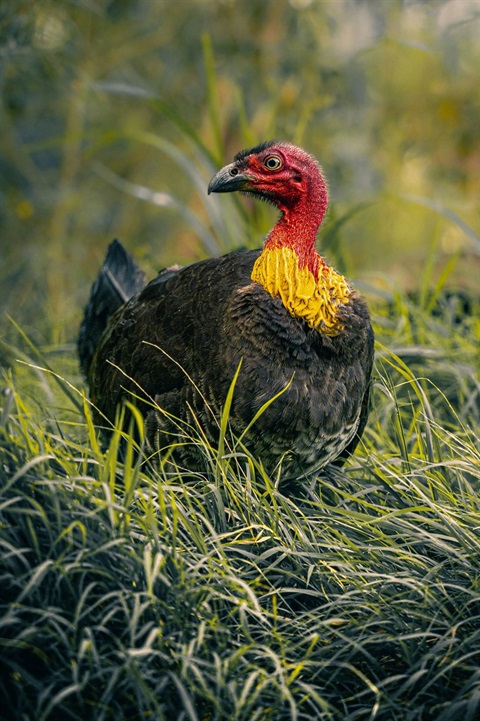The return of Australian brush turkeys to Willoughby

In the past 15 years, brush turkeys have become increasingly common in the suburbs of Willoughby.
However, this wasn’t always the case. During the Great Depression, brush turkey populations drastically declined as people hunted the birds and collected eggs from their conspicuous nest-mounds. As a result, brush turkeys were locally extinct in Sydney for over 80 years.
Brush turkeys in northern Sydney have made a rare recovery as a species once on the brink.
Now protected under the NSW Biodiversity Conservation Act, this unique native species is one of only three megapodes (ground birds that build nest-mounds from decomposing soil and vegetation to incubate their eggs) still found in Australia.
Some tips on how to avoid conflicts with Australian brush turkeys
The problem of hand feeding
Feeding Australian brush turkeys is strongly discouraged because it disrupts their natural foraging behaviours and diet, leading to health problems and dependency on human-provided food. Brush turkeys are adept at finding their own food in the wild, including insects, seeds, and fruits, which provide the necessary nutrients for their well-being.
When fed by humans, they often consume inappropriate foods that can cause nutritional imbalances and diseases. Additionally, feeding brush turkeys can lead to increased aggression and territorial disputes among the birds, an abnormally high number of birds gathering together, as well as conflicts with humans as they become bolder and more likely to invade gardens and public spaces. Encouraging brush turkeys to rely on human food sources can ultimately harm their survival and disrupt the delicate balance of the local ecosystem.
Managing brush turkeys on your property
Around June or July, male brush turkeys typically start building new nest-mounds or refreshing last season’s mounds. They relentlessly gather soil and leaf litter from the surrounding areas, often leading to conflicts with residents.
Gardens can be damaged as these birds use their large, powerful feet to scrape away layers of mulch and ground cover, leaving a trail of debris from the source location to the mound. This excess material can create a mess in landscaped areas and sometimes become a hazard on public paths and staircases.
The breeding season for brush turkeys, influenced by climatic conditions, generally lasts from July to December but can extend during cooler or wetter periods. You may notice a peak time of activity as young birds attempt to find suitable habitats, often these brush turkeys will move on and retreat further into the bushland.
To deter brush turkeys from constructing nest-mounds in your garden, early action is crucial. Once a mound is built and visited by female brush turkeys, it is illegal to interfere with it.
Encouraging a nest mound to be built in a less sensitive part of your garden can be beneficial, as male brush turkeys are territorial during the breeding season and will prevent other males from establishing mounds in their territory. Some gardeners even appreciate the birds raking the leaf litter, reducing the fuel load and controlling pests and weeds in some sections of the garden.
You may find you need to use plant guards for vulnerable plants and plan new planting projects between February and June when brush turkeys’ are not actively nest building.
For more information about brush turkeys, including ways to ethically and responsibly deter them from your garden, visit the NSW Environment and Heritage website.